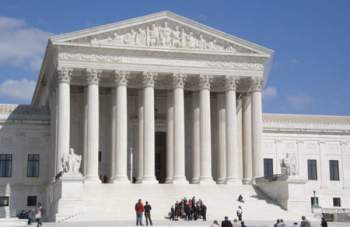
All You Need to Know About The Federal Government Role on Child Abuse Laws

The Federal Government does not have the ability to enforce child abuse laws. However, Federal law does affect State laws on child abuse.
How Federal Law Affects States Child Welfare Systems
The Federal Government does not have the ability to make child abuse laws for specific states. It is a State's job to create and enforce child abuse laws in their jurisdiction. However, the Federal Government continues to have a very large impact on the child abuse laws that exist in every State throughout the United States.
This is because many states rely on Federal funding, usually in the form of grants, in order to establish and maintain child abuse education and prevention programs, as well as efficient and successful systems for providing children with protection from child abuse.
In order for a State to obtain these grants, the Federal Government can require that the State meet certain eligibility requirements. These eligibility requirements often involve the establishment of specific child abuse laws and specific policies and procedures related to child abuse. If a State does not have the laws or procedures that are required by the Federal Government, then a State will be denied Federal funding.
If a State receives funding and does not continue to meet the requirements set forth by the Federal Government, then the financial assistance can be withdrawn. In this way, the Federal Government can influence and control the types of child abuse laws that are instituted by varying states. This is known as the power of the purse string.
Child Abuse Prevention and Treatment Act
When the Child Abuse Prevention and Treatment Act was passed in 1974, it was the first time that the Federal Government took a stand in recognizing, preventing, and providing treatment for abuse. The Act was aimed at increasing family stability and decreasing instances of child abuse in the United States. The Act provided Federal investment in child abuse research in order to better understand the factors surrounding child abuse.
The Child Abuse Prevention and Treatment Act was responsible for establishing The National Center on Child Abuse and Neglect, which was responsible for determining which topics needed to be focused on, as well as what areas should be at the center of future research. The Act also developed the National Clearing House of Child Abuse and Neglect Information, which was the center for collecting research, data, and documents related to child abuse and child abuse prevention.
This Act began the development of Federal grants in order to assist with preventing child abuse and providing abused children with protection. Since it was developed, the Child Abuse Prevention and Treatment Act has been revised many different times in order to assure that it is effective in protecting children and preventing further abuse.
Child Abuse Amendments of 1984
The Child Abuse Amendments of 1984 were created in order to increase the effectiveness and the scope of the Child Abuse Prevention and Treatment Act. These Amendments were developed due to the increase in infant deaths due to medical neglect. Medical neglect occurs when a child is refused access to healthcare or to treatment when they are suffering from an illness or an injury.
Medical neglect can be fatal to a child. In many cases, parents who have given birth to a child who has a mental illness or disability that is accompanied by a life threatening condition would often refuse to provide the child with medical treatment for the condition because the child's quality of life will not improve. This will often result in the death of the child.
The Child Abuse Amendments of 1984 provided funding for research related to children who have been subjected to medical neglect. The Amendments made it mandatory for states to develop an effective system of responding to reports of medical neglect. The Child Abuse Amendments of 1984 were extremely controversial. They were only in place for a short period of time before they were overturned by the Federal court.
Child Abuse Prevention, Adoption, and Family Services Act of 1988
The Child Abuse Prevention, Adoption, and Family Services Act of 1988 was responsible for revising the Child Abuse Prevention and Treatment Act of 1974. It sought to raise awareness of child abuse, child abuse warning signs, and effects of abuse.
Child Abuse, Domestic Violence, Adoption, and Family Services Acts of 1992
The Child Abuse, Domestic Violence, Adoption, and Family Services Acts of 1992 is the first revision to the Child Abuse Prevention and Treatment Act that recognized the importance of cultural differences. The understanding and use of child abuse and neglect varies a great deal from culture to culture. Many cultures implement the use of discipline in different ways.
Child Abuse Prevention and Treatment Amendments of 1996
The Child Abuse Prevention and Treatment Amendments of 1996 were developed in order to provide attention to some problems and concerns presented by the Child Abuse Prevention and Treatment Act of 1974. The Amendment addressed the growing concern regarding failure to respond to child abuse reports or inadequately responding to reports. Due to the immunity and anonymity of the individuals who call to report suspected child abuse, false reporting became a frequent occurrence.
The 1996 Amendment also confronted concerns about the delayed abolition of parental rights to a child once the child has been determined to be suffering from abuse. The Child Abuse Prevention and Treatment Amendments of 1996 terminated the National Clearinghouse on Child Abuse and Neglect Information and instituted the Office on Child Abuse and Neglect.
The 1996 Amendment upheld many of the Acts and Amendments that were previously developed by the Federal Government, including the Adoption Opportunities Act and the Victims of Child Abuse Act. It also publicized a minimum definition of child abuse, so that all individuals know what behavior is considered to be abusive. It is the first Amendment that recognized a parent's right to refuse medical treatment for a child based on religious beliefs.
Child Abuse Prevention and Enforcement Act of 2000
The Child Abuse Prevention and Enforcement Act of 2000 attempted to create effective methods of resolving the problem of inadequate response to child abuse reports. Many reports of child abuse were not being investigated thoroughly, and many cases of suspected child abuse were not being investigated at all.
In order to remedy this, the Federal Government permitted State law enforcement agencies access to Federal law enforcement funds. This financial assistance was to be used in order to enhance and to further develop State criminal justice systems so that they may effectively respond to reports of abuse. The funds may also be used in order to develop educational programs that are aimed at education.
Keeping Children and Families Safe Act of 2003
The Keeping Children and Families Safe Act of 2003 ensured that Federal grants continued to be provided to states in order to ensure that the victims of child abuse were provided with access to adequate treatment. It also aimed to ensure that financial assistance was available so that states could develop programs that focused on child abuse prevention and child protection.
The Act modified some of the State eligibility requirements for Federal funding and also added new eligibility requirements in order to receive Federal grants. If a State did not meet the eligibility requirements, then they would not be awarded financial assistance from the Federal Government.
States that do meet the eligibility requirements will receive funding for improving and enhancing child abuse programs, such as the Abandoned Infants Assistance program. The financial assistance could also be used in order to improve technology that may assist in child abuse cases. The Keeping Children and Families Safe Act of 2003 provided eligible states with millions of dollars of financial assistance every year in order to assist in preventing and ending child abuse.



















